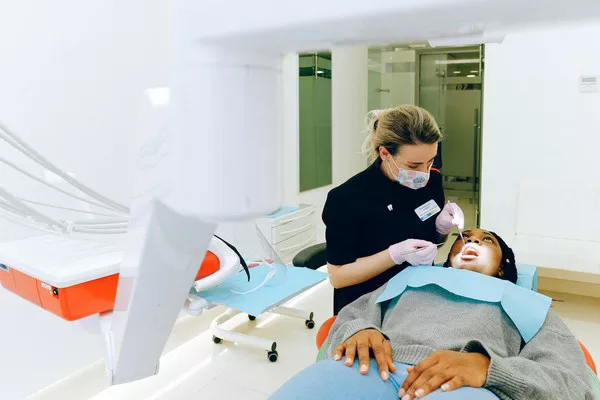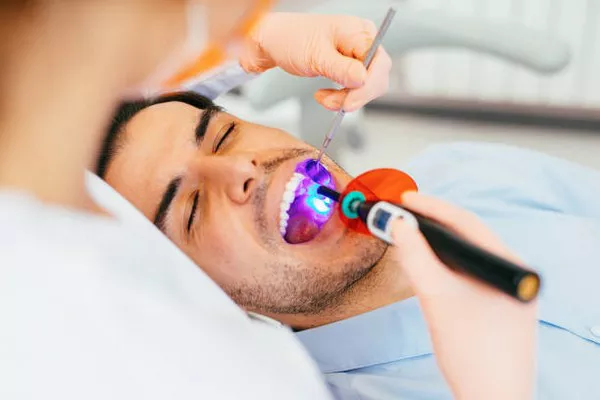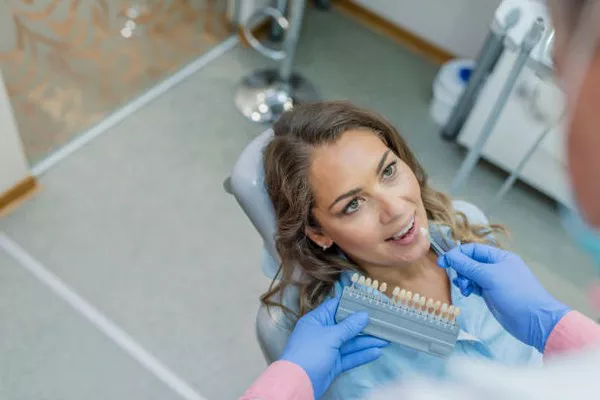After undergoing a dental filling procedure, patients often wonder when they can safely eat without risking damage to the newly filled tooth. Proper postoperative care is essential for the success and longevity of dental fillings. This article will explore the recommended waiting time before eating after a filling, types of fillings that may influence this duration, practical eating tips, postoperative care advice, potential complications, and when to contact a dentist for follow-up.
Explanation of Dental Fillings
Dental fillings are restorative materials used to repair teeth that have been damaged by decay or trauma. They help restore the tooth’s structure and function by filling in cavities or areas where the tooth structure has been lost. Fillings prevent further decay and protect the tooth from additional damage, ultimately preserving the tooth’s integrity and preventing the need for more invasive treatments like extractions or root canals.
Types of Fillings
There are several types of dental fillings, each with its own advantages and considerations:
Composite Fillings: Made of a mixture of plastic and fine glass particles, composite fillings are tooth-colored and blend in with the natural tooth. They are a popular choice for visible teeth due to their aesthetic appeal. Composite fillings harden quickly under a special light, allowing for immediate use after the procedure.
Amalgam Fillings: Composed of a mixture of metals, including silver, mercury, tin, and copper, amalgam fillings are durable and less expensive than other types. They are typically silver in color and are often used for fillings in back teeth.
Gold Fillings: Gold fillings are durable and well-tolerated by gum tissue. They are custom-made in a dental laboratory and require multiple visits for placement.
Porcelain Fillings: Also known as inlays or onlays, porcelain fillings are fabricated in a dental laboratory and then bonded to the tooth. They are highly aesthetic and can withstand significant chewing forces.
see also:How much is a temporary tooth filling?
Waiting Time
The recommended waiting time before eating after getting a filling can vary depending on the type of filling material used. Here are general guidelines:
Composite Fillings: Patients can typically eat immediately after getting a composite filling. These fillings harden quickly and are fully cured by the time the procedure is complete.
Amalgam Fillings: It is advisable to wait at least 24 hours before eating solid foods after getting an amalgam filling. While the filling hardens quickly, allowing patients to eat soft foods immediately, waiting longer ensures the filling has fully set.
Gold Fillings: Patients may need to wait several days before eating solid foods after receiving a gold filling. Gold fillings require multiple steps and may take longer to fully set.
Porcelain Fillings: Similar to gold fillings, patients may need to wait several days before eating solid foods after receiving a porcelain filling. These fillings are fabricated outside the mouth and require bonding to the tooth.
Eating Tips
After getting a filling, it’s essential to take precautions while eating to avoid damaging the newly filled tooth. Here are some practical tips:
Avoid Hard and Sticky Foods: Hard and sticky foods can dislodge or damage the filling. Avoid chewing on hard candies, nuts, ice, or sticky candies like caramels.
Chew Carefully: Take small bites and chew slowly, especially on the side of the mouth where the filling was placed. Distribute food evenly on both sides of the mouth to prevent putting excessive pressure on the filled tooth.
Choose Soft Foods: Stick to soft foods initially, such as yogurt, mashed potatoes, soups, and smoothies. These foods are gentle on the teeth and less likely to cause discomfort.
Postoperative Care
Proper postoperative care is crucial for a successful recovery after getting a filling. Here are some tips:
Pain Management: Over-the-counter pain relievers like ibuprofen or acetaminophen can help alleviate any discomfort after the procedure. Follow the dentist’s instructions regarding medication dosage.
Sensitivity Issues: It’s common to experience some sensitivity to hot, cold, or pressure after getting a filling. This sensitivity usually subsides within a few days. Avoid extreme temperatures and overly hard or crunchy foods.
Maintain Oral Hygiene: Continue brushing and flossing regularly to maintain good oral hygiene and prevent further decay. Be gentle around the filled tooth to avoid irritating the gum tissue.
Potential Complications
While dental fillings are generally safe, some potential complications may arise:
Numbness: It’s normal to experience numbness in the mouth immediately after the procedure due to local anesthesia. Avoid eating or drinking until the numbness wears off to prevent accidentally biting the cheek or tongue.
Discomfort: Some discomfort or soreness around the filled tooth is normal and should subside within a few days. If the discomfort persists or worsens, contact your dentist for further evaluation.
Gum Tissue Irritation: The gum tissue around the filled tooth may feel tender or irritated for a few days. Rinse your mouth with warm saltwater to soothe the gums and promote healing.
Bite Adjustment: In some cases, the filling may affect the bite alignment, causing discomfort when chewing. If you notice any changes in your bite or if the filling feels uneven, contact your dentist for an adjustment.
see also:How much do porcelain fillings cost?
When to Contact a Dentist
While some discomfort and sensitivity are normal after getting a filling, certain signs warrant follow-up with a dentist:
Persistent Pain: If you experience severe or persistent pain around the filled tooth that does not improve with over-the-counter pain relievers, contact your dentist.
Uneven Bite: If the filling feels uneven or if you notice changes in your bite alignment, schedule an appointment with your dentist for a bite adjustment.
Signs of Infection: Watch for signs of infection, such as swelling, pus discharge, or fever. These symptoms may indicate an underlying issue that requires prompt attention.
Conclusion
Knowing how long to wait before eating after getting a filling is essential for ensuring the success and longevity of the restoration. The recommended waiting time can vary depending on the type of filling material used, so it’s essential to follow your dentist’s instructions carefully. By taking precautions while eating, practicing good postoperative care, and monitoring for potential complications, you can promote healing and maintain optimal oral health. If you have any concerns or experience unusual symptoms after getting a filling, don’t hesitate to contact your dentist for further evaluation and guidance.
FAQs about Dental Fillings and Cavities
1. When Can I Eat After 3 Fillings?
After getting 3 fillings, it’s generally advised to wait until the local anesthesia wears off before eating. This usually takes about 1-3 hours. Eating while still numb can risk biting your tongue or cheek. Once the numbness is gone, start with soft foods and avoid chewing directly on the filled teeth for the first 24 hours if composite fillings were used. If amalgam (silver) fillings were used, avoid chewing on the filled teeth for at least 24 hours to allow the material to harden.
2. Is 3 Cavities a Lot?
Having 3 cavities is not uncommon, but it can be considered more than average, especially if they occur within a short period. It can indicate a need for better oral hygiene practices or dietary changes. Regular brushing, flossing, and dental check-ups are essential to prevent cavities. If you frequently get cavities, it may be worth discussing with your dentist for personalized advice on improving your oral health routine.
3 .How Long Will 3 Cavities Take to Fill?
The time required to fill 3 cavities depends on their size, location, and the type of filling material used. Generally, filling a single cavity takes about 20-30 minutes. Therefore, filling 3 cavities might take around 60-90 minutes in total. However, this can vary based on individual circumstances and the dentist’s efficiency. If the cavities are in different parts of the mouth, the dentist might recommend separate appointments to ensure comfort and thorough care.
4. How Many Cavities is Normal for a 25-Year-Old?
The number of cavities a 25-year-old might have can vary widely based on factors like diet, oral hygiene habits, fluoride exposure, and genetics. On average, adults may have experienced 1-2 cavities by this age. However, some individuals may have none, while others might have more. The key to preventing cavities at any age is maintaining good oral hygiene practices, such as brushing twice a day with fluoride toothpaste, flossing daily, limiting sugary snacks and drinks, and regular dental check-ups.
You Might Be Interested In
































